calsfoundation@cals.org
Catholic Point (Conway County)
Catholic Point, which began in 1878 in rural northern Conway County, is a small Italian community associated with the large European immigration of the last quarter of the nineteenth century. The community is best known for the Catholic Point Picnic, which has been held since 1929 on the third Saturday in June at the parish hall of St. Joseph’s Catholic Church. Catholic Point maintains its cultural identity, and the afternoon picnic attracts more than 2,500 each year.
From the mid-1870s until 1890, Bishop Edward M. Fitzgerald, the second prelate of the Diocese of Little Rock, promoted and successfully attracted Roman Catholic families from Europe, many of whom were facing difficult economic conditions, to the state. While not necessarily identified as a part of the St. Joseph Colony, which was developed by Father Joseph Strub and located along the Arkansas River Valley, these Italian immigrants profited from railroad land arrangements that were negotiated by Father Strub.
By 1881, several families had settled in the hill country, about eighteen to twenty miles north of Morrilton (Conway County). The higher elevation, slopping hillsides, and abundant water sources provided the conditions desired for their crops, which included corn, various grains, and especially grapes.
Many of these early family names—such as DeSalvo, Paladino, Hart, Malik, and Rossi—are still prevalent in the community. Other early settlers who either relocated or lost their names after marriage include Zarlingo, Lanni, and Lombardo. Some non-Italian-sounding names became part of the community as settlers Americanized (for example, Andrews came from the original Mastrandrea).
The “Italians,” as they were known to the nearby Protestant communities, kept somewhat to themselves during the early years, and their customs and foods were seen as a curiosity. They were said to “order their wives from a catalog,” a reference to the practice of bringing over young women from the old country. While some anti-Catholic sentiment was evident during the 1920s, it never reached serious proportions locally. The community picnic was, in part, designed to promote positive relationships with neighboring communities.
Not only did the Catholic Point community become a part of the Conway County culture, it came to play a valuable role in county and statewide politics. During the 1950s and 1960s, “Uncle Tony” DeSalvo annually hosted the members of the Arkansas General Assembly at his local winery, serving homemade Italian sausage and spaghetti. Prior to changes made to the primary election dates in the 1980s, statewide politicians considered the Catholic Point Picnic a “must attend” political event. Although not as significant to twenty-first-century politics, the picnic is still seen as important for local and statewide aspirants.
Two Catholic Point natives have been involved in aviation history. On November 15, 1951, U.S. Air Force captain John L. (Johnny) Paladino of Catholic Point was rendered unconscious returning from a combat mission over Korea. Two other pilots recognized the symptoms of oxygen deprivation and went to assist. They maneuvered their wingtips under those of Paladino’s F-84 Thunderjet and gently guided his descent to a more oxygen-rich atmosphere. The story was covered in an article in the December 17, 1951, issue of Life magazine, and the event was included in Ripley’s Believe it Not. Another Catholic Point son, A. B. (Toney) DeSalvo, an American Airlines pilot, reportedly flew the first commercial jet into Little Rock (Pulaski County).
The community received unfortunate statewide and national attention on January 15, 1962, when ten members of the Andrew and Melba Paladino family died in a house fire.
Beef cattle operations and hay production have replaced a once vibrant local dairy industry. In 2004, Southwestern Energy Company began development of the Fayetteville Shale, an extensive and productive natural gas–bearing rock formation. The Catholic Point community, located in a favorable position for exploration and development, saw a significant positive economic impact. By 2016, however, the industry had dwindled.
St. Joseph Parish has been very stable since its founding in 1881 and continues to support 150 families. The community remains unincorporated but has approximately 500 residents. Area children are a significant part of the large consolidated Nemo Vista School District in Center Ridge (Conway County). In addition to farming, many adults work in the nearby cities of Conway (Faulkner County) and Morrilton.
For additional information:
Conway County, Arkansas: Our Home, Our Land, Our People. Little Rock: Historical Publications of Arkansas, 1992.
Woods, James M. Mission and Memory: A History of the Catholic Church in Arkansas. Little Rock: August House Publishing Co., 1993.
Zarlingo, Joseph A. “St. Joseph’s Catholic Church—Catholic Point Community Centennial Edition 1881–1981.” Catholic Point, AR: St. Joseph’s Catholic Church, 1981.
Larry Taylor
Springfield, Arkansas
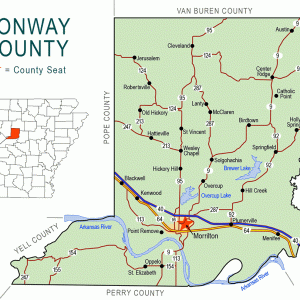 Conway County Map
Conway County Map  Fayetteville Shale Rig No. 33
Fayetteville Shale Rig No. 33 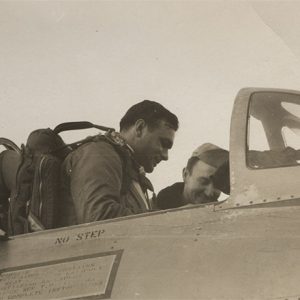 Johnny Paladino
Johnny Paladino 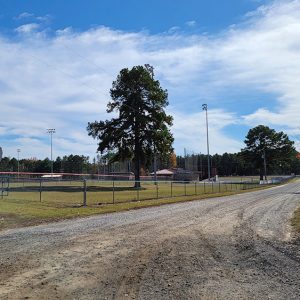 Sports Complex
Sports Complex 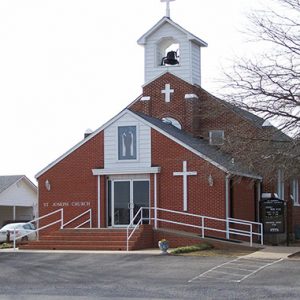 St. Joseph's Catholic Church
St. Joseph's Catholic Church 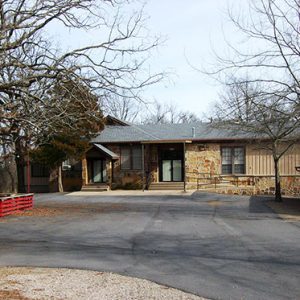 St. Joseph's Catholic Church Parish Hall
St. Joseph's Catholic Church Parish Hall 



Comments
No comments on this entry yet.